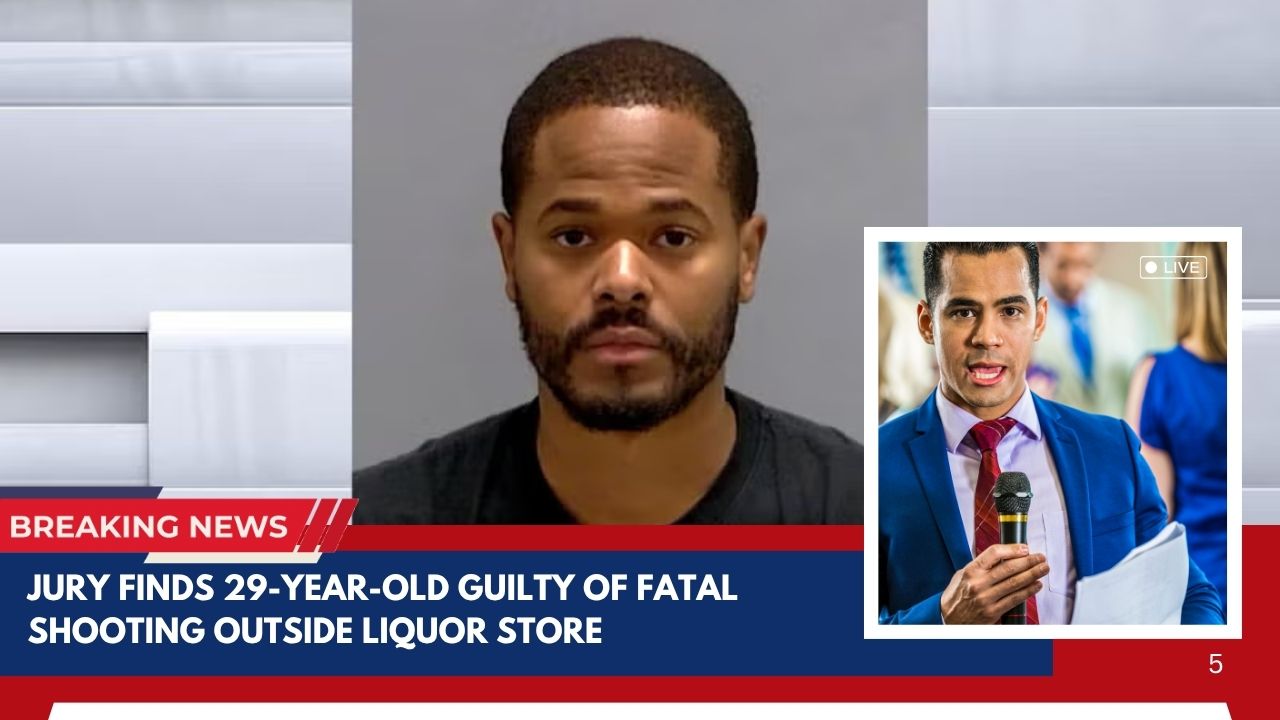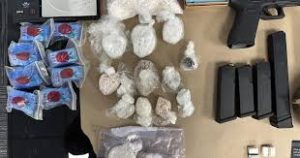Violent incidents outside of liquor stores, particularly in urban centers across the United States, have been on the rise, with tragic consequences for individuals, families, and communities. This article delves into the dramatic case of a 29-year-old individual found guilty by a jury for a fatal shooting outside a liquor store, examining the events leading up to the crime, the trial, and the wider significance of the verdict. Through this lens, we explore the setting, the impact on the neighborhood, and the unsettling statistics that reflect broader national trends.
The Crime: A Tragic Night Outside the Liquor Store
The Setting
On a summer evening, in a bustling district of Indianapolis, tragedy struck outside a neighborhood liquor store. The establishment, located at the heart of a community often frequented for its late-night convenience, became the scene of a devastating altercation. Crime reports indicate that incidents around liquor stores have increased in many cities, with Indianapolis, Detroit, Minneapolis, and Baton Rouge registering some of the highest rates of violent offenses near such outlets each year.
Escalating Events
Witnesses recounted that the shooting followed a brief, heated dispute between the accused and the victim. Tensions that simmered throughout the day finally boiled over shortly after sunset. Surveillance footage captured the two exchanging words before the 29-year-old drew a firearm, pulling the trigger and unleashing irreversible consequences.
The Victim
The victim, a young local man in his early thirties, died at the scene, leaving family and friends in shock. Similar cases—such as the killing of Abel Ramos-Utuy outside a liquor store—underscore the prevalence of such tragedies, often rooted in spontaneous arguments or longstanding disputes.
The Investigation and Arrest
Rapid Police Response
Law enforcement responded within minutes to emergency calls. Officers cordoned off the area, canvassing for witnesses and securing evidence, including shell casings from the pavement and surveillance recordings from nearby businesses.
Across major U.S. cities, response times to shootings average 7-10 minutes—but in this case, officers arrived in approximately 6 minutes, a testament to the high-priority nature of such calls.
Gathering Evidence
Investigators quickly identified the suspect, recovering eyewitness testimony, video surveillance, and forensic evidence. The suspect, still armed, was apprehended several blocks away after attempting to flee the scene. The firearm recovered matched shell casings found on site. DNA evidence further cemented the connection between the suspect and the murder weapon.
The Trial: Justice Unfolds
Jury Selection and Opening Statements
The case proceeded to trial in the Marion County Superior Court. Jury selection—an essential process ensuring impartiality—lasted two days, with both defense and prosecution screening for biases related to guns, self-defense, and urban violence.
Both legal teams presented compelling opening statements. Prosecutors depicted the defendant as reckless and unapologetic, while the defense attempted to introduce mitigating circumstances—citing stress, self-defense, and lack of intent.
Key Testimonies
Witnesses included:
-
Nearby shopkeepers and customers who heard the gunshot and saw the altercation unfold.
-
Police officers who described their investigative procedures.
-
A forensic analyst confirming gun residue on the suspect’s hands.
-
Surveillance experts who authenticated the video evidence.
Closing Arguments and Deliberation
After several days of testimony, the jury was tasked with deciding the defendant’s fate. Deliberations were intense but relatively swift, concluding after 90 minutes—a sign the evidence was overwhelming.
The Verdict and Sentencing
The jury returned a unanimous verdict of guilty for second-degree murder, possession of a firearm by a felon, and related charges. The sentencing hearing revealed the emotional weight of the verdict: family members of the victim expressed both relief and lingering pain, while the defendant’s relatives pleaded for leniency.
The judge sentenced the 29-year-old to life imprisonment without the possibility of parole, reflecting the gravity of the offense and the persistent threat posed by gun violence in the city’s neighborhoods.
Community Reaction
A Neighborhood in Mourning
The fatal shooting sent shockwaves through Indianapolis and similar urban centers grappling with public safety concerns. Residents voiced a mixture of grief and anger, with calls for increased police presence, more street lighting, and community outreach programs.
Neighborhood activists organized vigils and community meetings, seeking to transform collective sorrow into action. The liquor store, temporarily shuttered, became a symbol of unresolved social issues—poverty, substance abuse, and insufficient mental health resources—all of which contribute to cycles of violence.
Broader Urban Challenges
Liquor store shootings are not isolated incidents. Over the past decade, cities like Detroit, Minneapolis, Buffalo, and Chicago have documented dozens of similar crimes, often clustered in economically disadvantaged areas.
For instance:
-
Minneapolis recorded 58 shootings within 100 feet of liquor stores in 2023, with 16 resulting in fatalities.
-
Detroit’s east side saw an 18% year-over-year increase in violent incidents near alcohol retailers.
-
Baton Rouge police responded to more than 40 violent incidents near liquor outlets in the past 12 months.
Gun Violence by the Numbers
National and Local Statistics
-
The United States saw more than 20,000 homicides involving firearms in 2024.
-
Urban areas account for about 70% of gun-related deaths.
-
In Marion County, where Indianapolis is located, there were 212 homicides in the past year—an 8% increase compared to the previous year.
A significant portion of these deaths occur near liquor stores, gas stations, or convenience shops—locations where tempers often flare and alcohol lowers inhibitions. These so-called “hot spots” draw disproportionate police resources and community concern.
Legal and Policy Implications
Taking a Tougher Stance
The jury’s quick verdict echoed a growing intolerance for gun violence among Americans. Elected officials, prosecutors, and police chiefs in cities like Indianapolis, Minneapolis, and Buffalo have launched new initiatives:
-
Stricter enforcement of existing gun laws, especially for repeat offenders.
-
Adding surveillance cameras and increasing patrols around liquor outlets.
-
Community education and violence interruption programs.
Notably, the Alcohol Policy Information System (APIS) has tracked a 25% increase in state-level legislation targeting crime near liquor retailers since 2021.
Prevention and Reform
Advocates stress that intervention must go beyond policing. Investment in youth employment, mental health care, and conflict resolution training are considered crucial to breaking the cycle. The city council in Indianapolis, for instance, recently approved $1.2 million for grassroots organizations providing afterschool activities and job training.
Personal Stories: Impact on Families
The Victim’s Family
The family of the murdered man grappled with grief, haunted by the suddenness of loss. Memorial services drew dozens of community members, highlighting the interconnectedness of the neighborhood and the deep wounds gun violence inflicts.
The Defendant’s Downward Spiral
Court testimony revealed the 29-year-old’s troubled past: early brushes with the law, growing up in a single-parent home, and struggles with substance abuse and unemployment. While nothing justifies the crime, these details shed light on the broader social forces at play.
Aftermath and Ongoing Recovery
Healing the Community
After the trial, local leaders initiated a series of healing events—peace walks, group therapy sessions, and school-based violence prevention education. Support from nonprofit organizations and faith leaders offered hope for restoring trust and resilience.
Policy Shifts and Next Steps
City officials pledged to expand crisis intervention teams and continue monitoring violence hot spots. Nationwide, similar initiatives are cropping up, reflecting increased recognition that liquor store shootings are a predictable—if still tragic—consequence of systemic neglect, limited opportunity, and easy access to firearms.
Conclusion
The jury’s guilty verdict in the case of the 29-year-old accused of a fatal liquor store shooting underscores the far-reaching consequences of urban gun violence. As one city comes to terms with loss and justice, the case serves as a stark reminder of the urgent need for comprehensive solutions. From tougher enforcement to deeper community investment, the path forward requires both accountability and compassion.
Communities from Indianapolis to Buffalo stand at a crossroads, determined to honor the memories of those lost while charting a future founded on peace and safety. As the city works to heal, the lessons learned may guide reforms nationwide, ultimately reducing the toll of senseless violence outside neighborhood shops and beyond.





